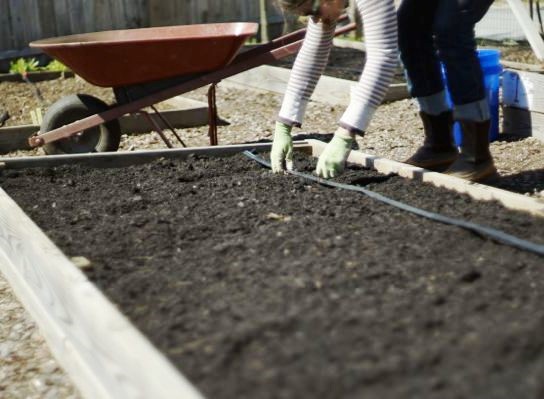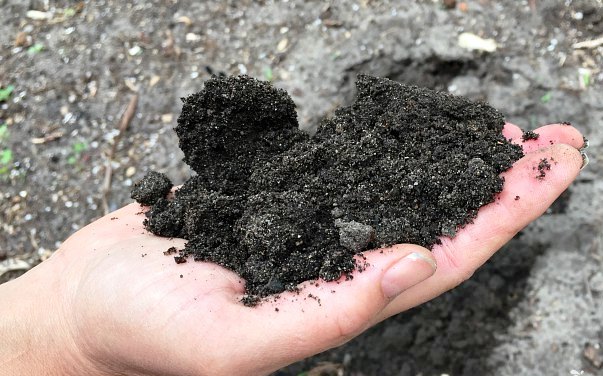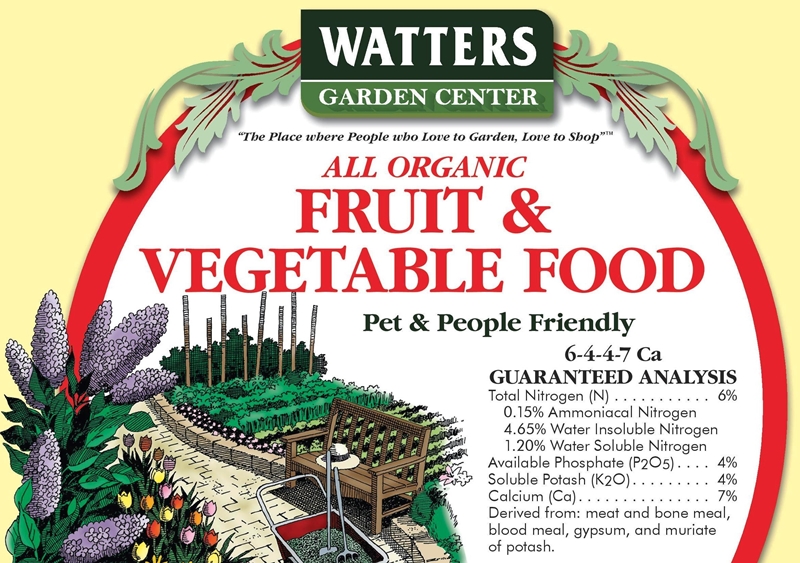By Ken Lain, the mountain gardener

On the Go Answer Condensed Version of this Article
- January is the month to amend garden beds
- Turn 2” layer of organic Manure & Mulch in one shovels depth
- Spread Fruit & Veggie Food, Sulfur, and Gypsum before double-digging soil
- Let sit for a month or deep water before planting
- Don’t walk on garden soil after turning
Gardeners know the better the soil, the larger the harvest, the brighter the flowers, the easier the gardening. Once you’ve tried digging the first planting hole in a mountain garden, you figure it out. Our native soils are HARD! Successful gardens always come down to soil quality. Skimp on spring preparation to “soften” the ground, and a garden’s production drops close to zero.
January is my month to amend garden beds, turn the soil, and let the garden rest before planting begins March first. Let me share a few secrets to mountain soil prep that return bushels of produce and a season full of flowers. Any backyard garden, whether in the ground or in raised beds, requires these easy steps.
The more organic material any soil contains, the better the soil quality. Our mountain soils are challenging because they lack organics such as compost, manure, and leaf mold. Because plants use up organic resources throughout the year, your gardens must be ‘topped off’ with freshly composted material each spring. The recipe that follows will add new vitality to your soil.
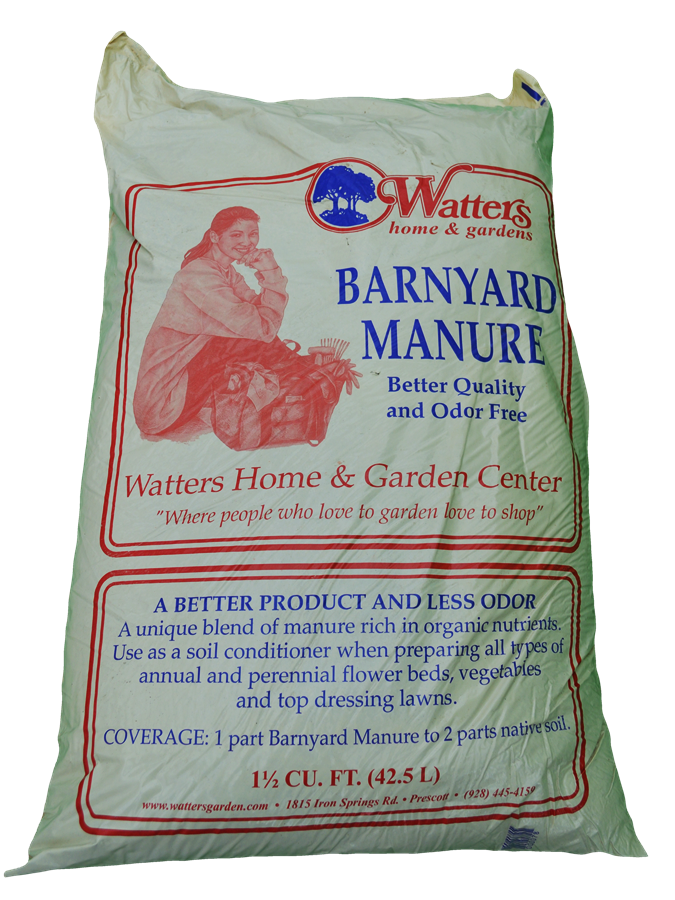
I use deodorized ‘Barnyard Manure‘ that comes bagged and ready to add to the garden for my smaller garden plots. This aged poop has a mixture of mature manure, it doesn’t smell, and it isn’t slimy. This year my gardens received a generous dose of 50% Watters Barnyard Manure and 50% of Watters Premium Mulch.
The mulch and manure additives ensure proper drainage, root growth, and water retention in the gardens. Many mountain plants require calcium, magnesium, phosphorus, and other minor elements, all of which should be added to your garden soil in January.
Before turning the compost additives into the planting bed, add two sources of nutrition. The first is a gypsum layer known as calcium sulfate, the most significant calcium source for plants. The second is an organic plant food I created called 6-4-4-7 ‘Fruit & Vegetable Food.‘ It also works well in flowerbeds to produce striking colors and fragrances!
Soil pH creeps up during the growing season. This is a problem that results from poor water quality and must be corrected to keep plants in the ideal 6.5 – 7.5 pH range. When your garden pH rises above this optimal range, production stops, fruit drops, the plants yellow, wilt, and finally drop their leaves. Granular “Soil Sulfur” turned into your garden soil to one shovel’s depth is the correction to wrong garden pH, and every mountain garden needs it.
In summary, here is the formula of soil amendments and additives to use this spring: Begin with a 2-inch layer of 50% ‘Premium Mulch’ and 50% ‘Watters Barnyard Manure’. On top of this organic layer, sprinkle the recommended rates of gypsum, Fruit & Vegetable Food 6-4-4-7, and Soil Sulfur. Turn these to one shovel’s depth into your garden soil, and you are ready to plant.
Freshly turned soil is light and airy, so tread carefully on your amended garden soil, so it retains this texture. Walk on predefined paths or use a wood plank to walk over the ground without compacting it unnecessarily. We should have at least two good winter storms before March first, but if not, deeply water your garden soil two times before planting. This will reduce damage if too much manure was added or if it congregated unevenly into the ground.
Exact additive amounts were not given in this column because those depend on your garden plot’s size. So visit me at Watters Garden Center for precise quantities of each additive to purchase. Remember to bring your garden measurements.
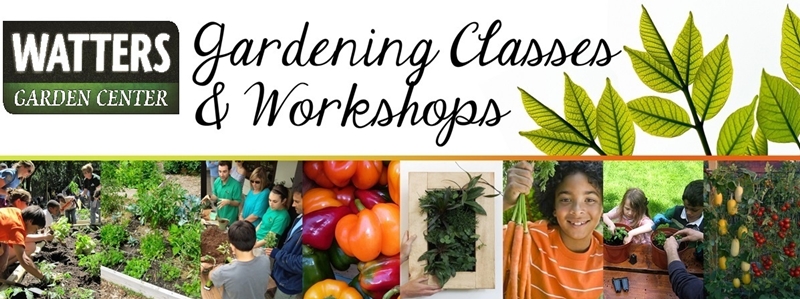
January 27th @ 9:30 AM Why January is the Month to Plant Wildflowers
February 3rd @ 9:30 AM Soil Preparation for Growing Success
February 10 @ 9:30 AM Mountain Fruit Trees and the Heavy Harvest
February 17 @ 9:30 AM Gardening for Newcomers
Until next week, I’ll be helping locals prepare their garden soils here at Watters Garden Center.
Ken Lain can be found throughout the week at Watters Garden Center, 1815 W. Iron Springs Rd in Prescott, or contacted through his web site at WattersGardenCenter.com or FB.com/WattersGardenCenter .


